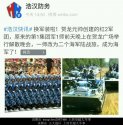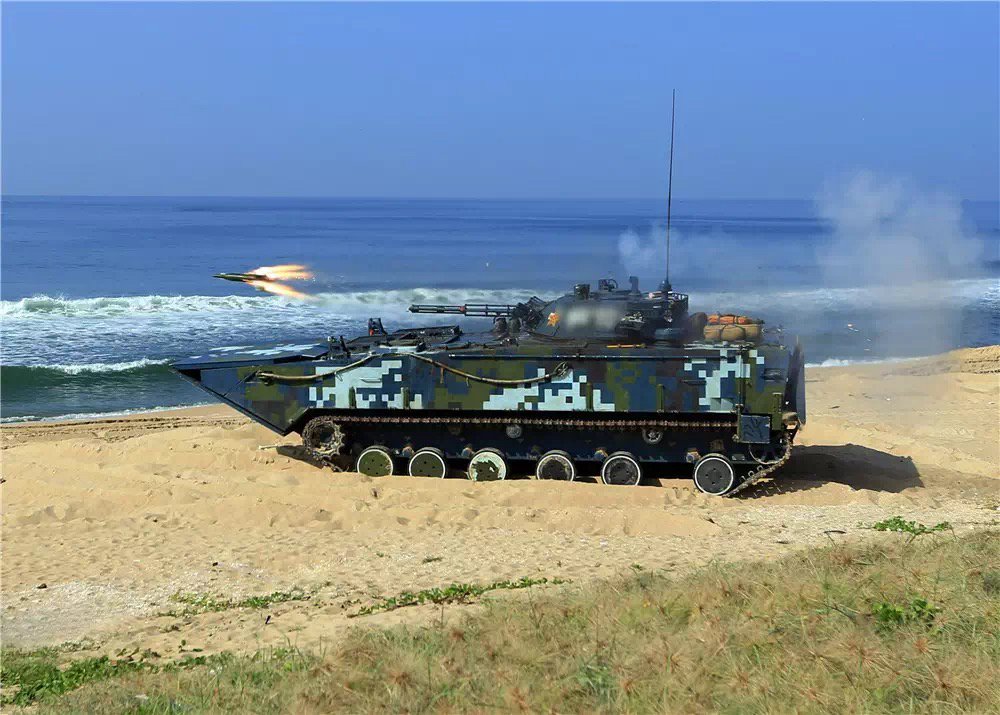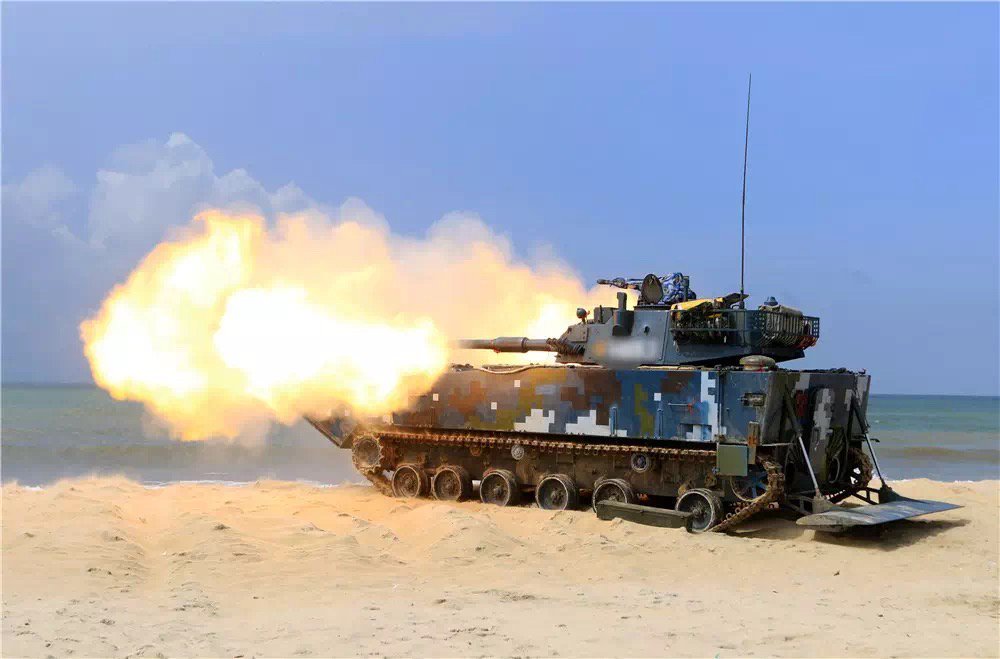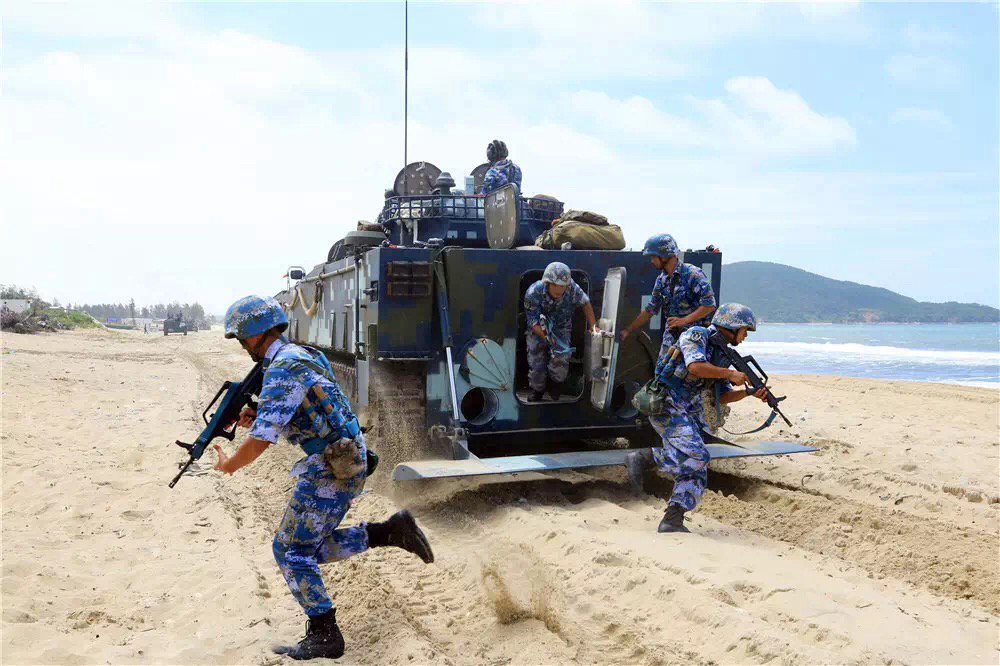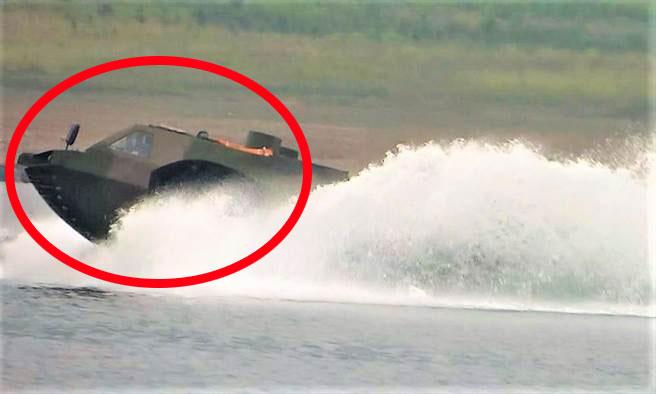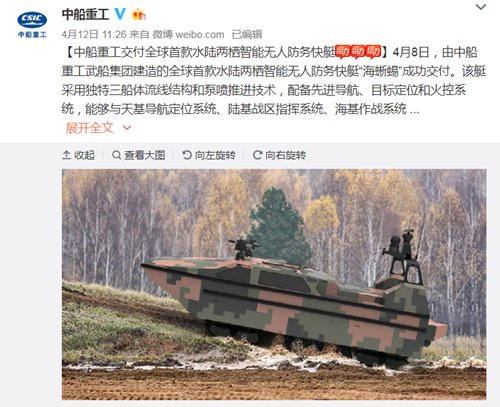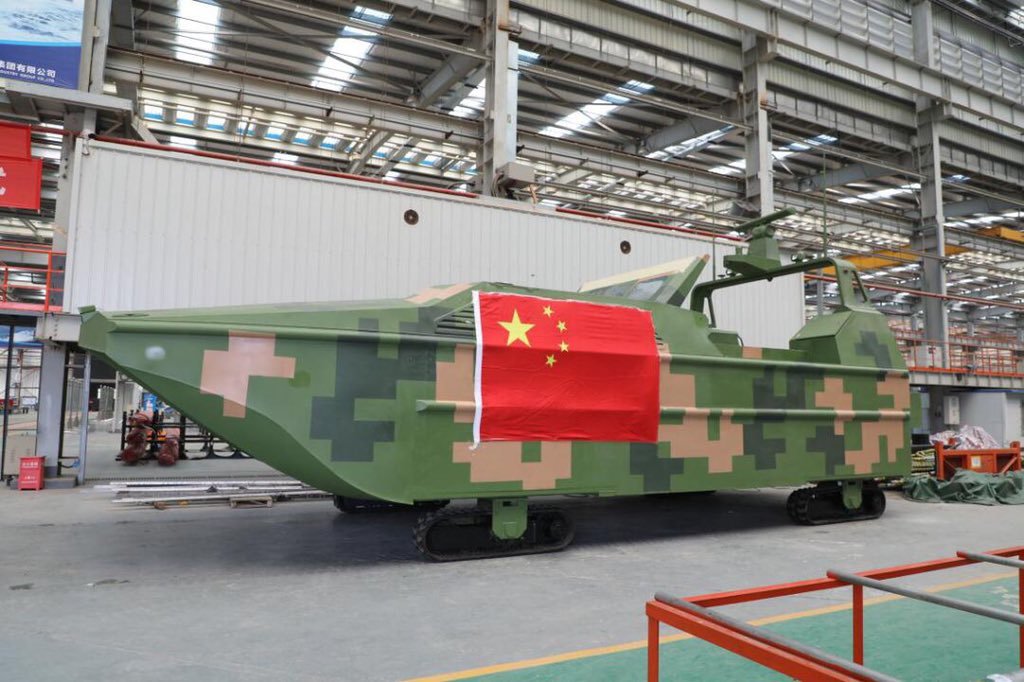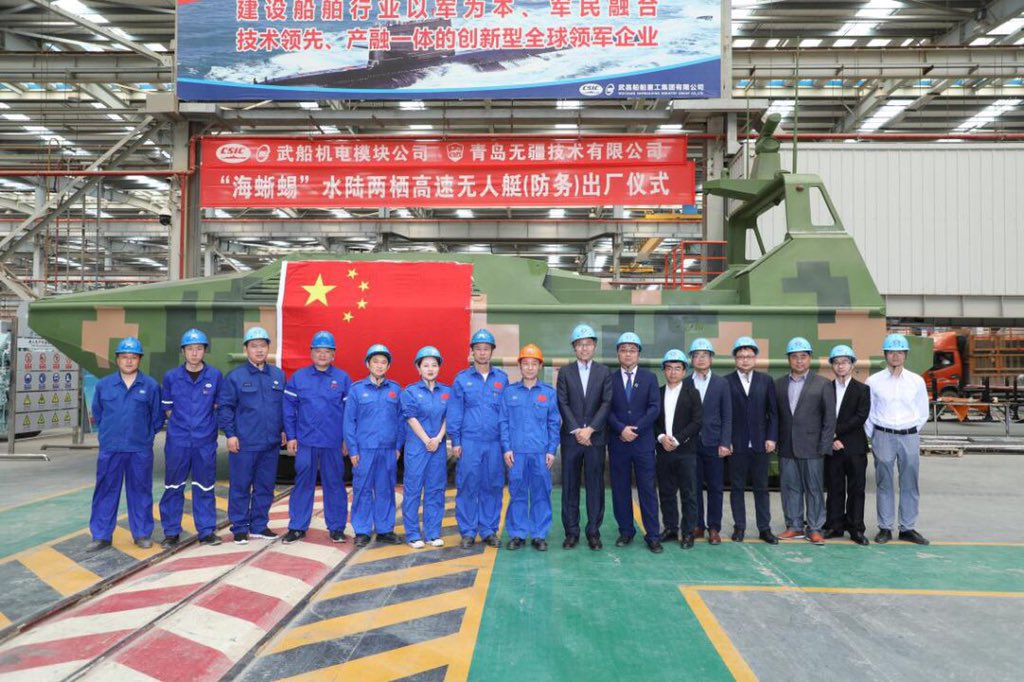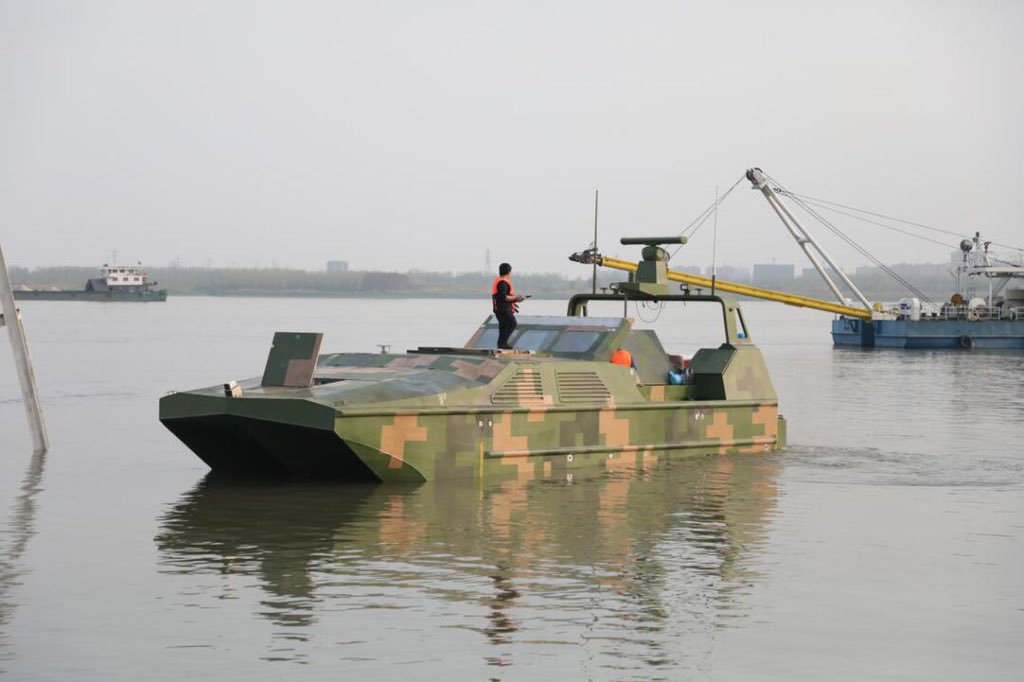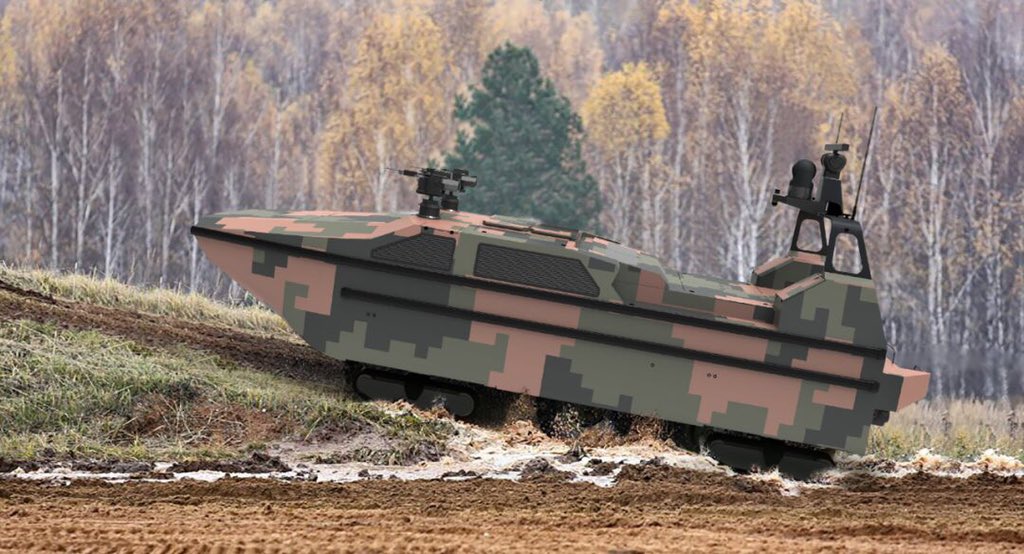I wrote the following almost a year ago, advocating/predicting that PLA combine the Army Amphibious Units and the Navy Marine Corp form a larger MC.
Well, it looks like that's what's happening. Chinese news report that PLA is transferring the two Army Amphibious divisions (1st Division at Hangzhou, 124th Division at Boluo) to Navy to combine with the two MC brigades currently at Zhanjiang. Eventually the Chinese MC will have six brigades, close to 100,000 soldiers.
A quite substantial change.
Well, it looks like that's what's happening. Chinese news report that PLA is transferring the two Army Amphibious divisions (1st Division at Hangzhou, 124th Division at Boluo) to Navy to combine with the two MC brigades currently at Zhanjiang. Eventually the Chinese MC will have six brigades, close to 100,000 soldiers.
A quite substantial change.
Good discussions about PLANMC and USMC. I think the structures and missions of PLANMC and USMC are quite different although they do overlap somewhat. The PLANMC is part of PLAN, and its missions have been traditionally limited and modest (taking beaches and small islands); whereas the USMC is almost a self-contained military branch, able to launch much larger-scale wars globally rather independently. These missions have been shaped by their respective experiences and histories.
That being said, I think the PLANMC is gradually changing and enlarging its missions, and indeed moving closer to the USMC model. This is reflected in the assets they're acquiring (and to be acquired). Historically, the PLANMC has set their sights on the small islands off the Chinese coast, and SCS reefs/islands. I don't even think the MC has been given a large role in a Taiwan contingency, which is really the job of PLA Amphibious group. With China's expanding global interest and footprints, it is very reasonable to expect that PLANMC to become more expeditionary in their missions. Personally, I think it makes sense down the road to combine the Army Amphibious Units and the Navy Marine Corp to form a more beefy MC, that is, closer to the USMC model.
The recent training of PLANMC in the Gobi Dessert, along with Army units, has raised a lot of interest, and has IMO given hints about the potential future direction of the PLANMC.
Here is an article from the National Interest commenting on the recent developments and likely trajectory of the PLANMC. One of the authors is a retired US Marine Colonel. I found the analysis quite rational.
A superpower can never have too many elite forces.
January 29, 2016
Much has been reported about the recent structural reforms undertaken by China’s People’s Liberation Army (PLA)—the end goal being a leaner and meaner military force, capable of undertaking a broad spectrum of missions under modern, high-tech conditions. Part of this drive towards a “new-age” PLA has been efforts to modernize the PLA Marine Corps (PLAMC), which notably carried out its latest winter training in the Gobi Desert, in Xinjiang.
Reported by Chinese sources as a combined-arms, live-firing war game involving over ten different PLAMC branches, this exercise featured state-of-the-art equipment, as observed in official released by Chinese media. The exercise was designed to enhance the PLAMC’s ability to operate in a real war situation, under day and night conditions. Besides conventional combat maneuvers against “Blue Force” adversaries, the exercise also included counterterrorism training.
To be certain, these PLAMC winter maneuvers are just one of several such training drills conducted under various climatic conditions. One such instance is , whose 2015 iteration was staged in the tropical southwestern province of Yunnan. The varied PLAMC training syllabus can be deemed a natural expansion of its capabilities and missions, considering that it is traditionally tasked to undertake operations against Taiwan in particular.
But there is more to it than that. In recent years the PLAMC is not merely maintaining its readiness to mount an amphibious invasion across the Taiwan Strait (or conduct other operations in the context of the East and South China Sea disputes). Rather, it is bulking up in order to give the Chinese political leadership another flexible tool for responding to contingencies not just within China’s immediate East Asian region, but also beyond.
Taking a Leaf from the USMC Playbook?
[Omitted]
Building “Chinese ARGs and ESGs”?
[Omitted]
“Out-of-Area” CT Connection
[Omitted]
Potential Ramifications
The recent PLAMC force developments constitute a huge change from the last sixty years, when USN/USMC forces were the “only show in town” in the Indo-Asia-Pacific region, especially East Asian waters. Consider the potential ramifications of such a Chinese amphibious force maintaining a constant presence in, say, Southeast Asia, Beijing’s erstwhile “southern periphery” that is of such great political, economic and military significance. If one can observe that the Thirty-First MEU only patrols in the region a couple times annually, there is no reason why the PLA cannot have an equivalent force (or two) maintaining an even more regular presence, taking advantage of its geographical proximity.
And one should expect the PLA to use its own brand of ARGs and ESGs for various expeditionary-type operations, such as noncombatant evacuation (a role the PLA demonstrated in Yemen in March–April 2015), humanitarian assistance and disaster relief in the region and further afield. In the aftermath of Typhoon Haiyan in November 2013, the Chinese—though acting partly out of spite to punish Manila—could only belatedly deploy a hospital ship, while watching the Americans and Japanese reap political benefits from humanitarian operations in the Philippines. A PLAMC/PLAN expeditionary amphibious force will allow China to more effectively conduct “disaster diplomacy” in the future.
One must also consider that the next time a local ethnic Chinese populace in Southeast Asia gets roughed up, as has happened before (in Indonesia in the late 1990s, and possibly in Malaysia following a recent ), the PLA might not just watch from a distance. A Chinese ARG/ESG, primed for overseas “gunboat diplomacy” on short notice, is an intimidating prospect. Therefore, the PLAMC’s recent developments and likely future advances in its expeditionary capabilities mark a significant change in the regional security dynamic. Without forgetting other aspects of the PLAN buildup, such as its vaunted aircraft carrier program, one should not overlook the importance of China’s amphibious forces buildup.

